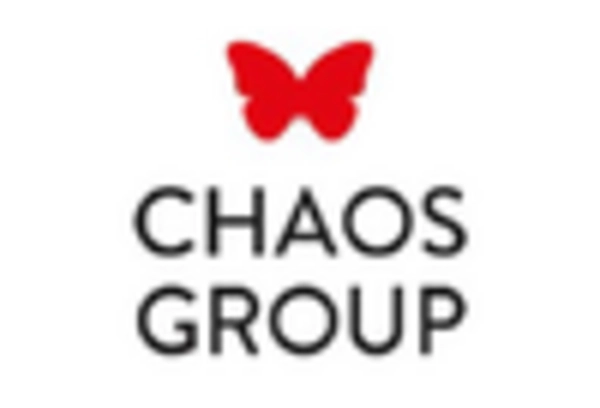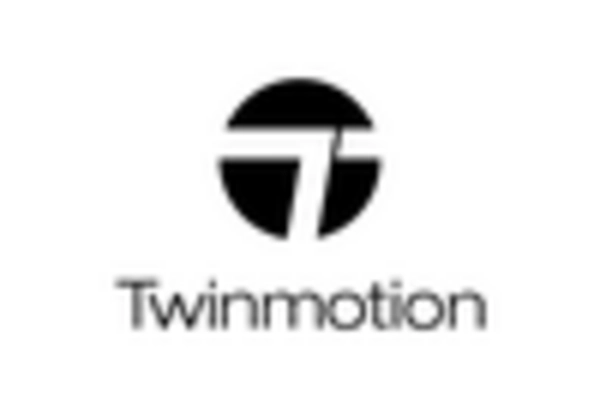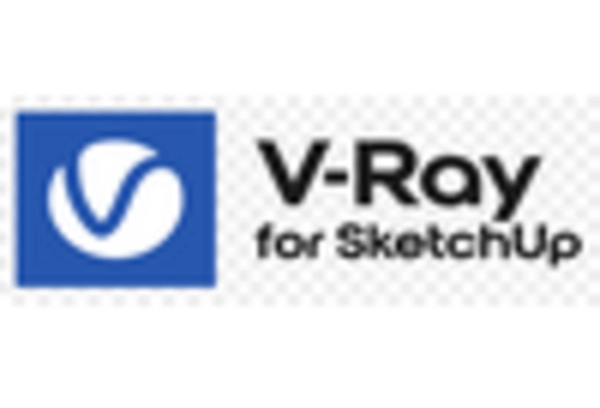Growing Popularity of 3D Printing
The growing popularity of 3D printing technology is emerging as a significant driver for the Architectural Rendering Software Market. As architects and designers increasingly adopt 3D printing for prototyping and model-making, the need for compatible rendering software becomes paramount. This software must facilitate the creation of detailed 3D models that can be directly translated into physical prints. The intersection of 3D printing and architectural rendering is fostering a new wave of innovation, as designers seek to visualize their concepts in tangible forms. This trend is expected to enhance the demand for specialized rendering tools within the Architectural Rendering Software Market, as professionals strive to bridge the gap between digital designs and physical realities.
Rising Demand for Visualization Tools
The Architectural Rendering Software Market experiences a notable surge in demand for advanced visualization tools. Architects and designers increasingly seek software that can produce high-quality, photorealistic renderings to effectively communicate their design concepts. This trend is driven by the need for enhanced client presentations and marketing materials. According to recent data, the architectural visualization segment is projected to grow at a compound annual growth rate of approximately 25% over the next five years. As a result, software providers are focusing on developing innovative features that cater to this demand, thereby expanding their market share within the Architectural Rendering Software Market.
Emphasis on Collaborative Design Processes
The Architectural Rendering Software Market is witnessing a shift towards collaborative design processes, driven by the need for multidisciplinary teams to work together seamlessly. As projects become more complex, architects, engineers, and stakeholders require tools that facilitate real-time collaboration and feedback. Architectural rendering software that supports cloud-based functionalities allows for simultaneous access and editing, enhancing communication and efficiency among team members. This collaborative approach not only streamlines workflows but also improves the overall quality of designs. As the demand for such collaborative tools increases, the Architectural Rendering Software Market is likely to adapt and evolve, offering solutions that cater to the needs of modern design teams.
Increased Investment in Infrastructure Development
The Architectural Rendering Software Market is significantly influenced by increased investment in infrastructure development across various sectors. Governments and private entities are allocating substantial budgets for urban development, transportation, and public facilities, which in turn drives the demand for architectural rendering software. This investment trend is expected to create a robust pipeline of projects requiring detailed visualizations, thereby boosting the market. For instance, the construction sector is projected to grow at a rate of 4.5% annually, leading to a heightened need for rendering solutions that can effectively showcase architectural designs. Consequently, this influx of projects is likely to propel the Architectural Rendering Software Market forward.
Technological Advancements in Software Capabilities
Technological advancements play a pivotal role in shaping the Architectural Rendering Software Market. The integration of artificial intelligence and machine learning algorithms into rendering software enhances efficiency and accuracy, allowing for faster rendering times and improved output quality. These innovations enable architects to experiment with various design elements and materials in real-time, fostering creativity and reducing project timelines. Furthermore, the introduction of real-time rendering capabilities is transforming the way architects visualize their projects, making it easier to make informed design decisions. As these technologies continue to evolve, they are likely to drive further growth in the Architectural Rendering Software Market.


















Leave a Comment